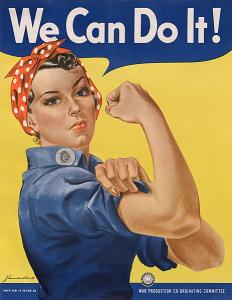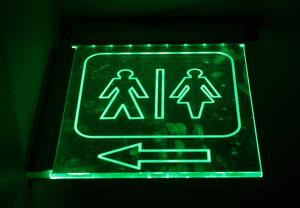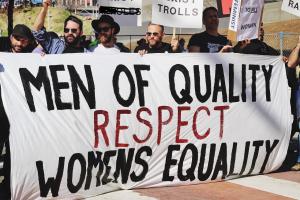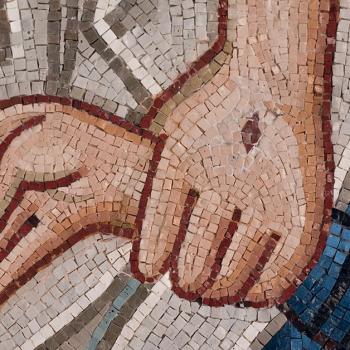
The following is Part 1 of an ongoing series exploring gender roles in the Church.
A recent study by Church Clarity showed that in the United States, 76% of the 100 largest churches believe in ideas like complementarianism, a doctrine that assumes women are less equipped to serve in leadership roles than men. That also means that in these churches, women are not allowed to preach.
Ideas such as these are widespread in the church at large. A landmark 2018 study found that only 15% of clergy in the United States are women, and experts over the last thirty years agree that in 90% of Evangelical homes, men are seen as the main authority.
“That’s women’s work…”
Many years back at a small church I pastored, after a potluck supper I noticed most of the men gathering by the coffee maker and talking amongst themselves. Meanwhile, all the women were putting up food and cleaning. It had been only a few days after I first came to be their pastor, and I had not yet had any opportunity to observe how the congregation worked together.
I was breaking down folding tables, and as I looked up, one of the elderly men signaled me over. “Preacher,” he said, “Pour yourself a cup of coffee and relax.” I replied, “Thanks, I appreciate it. I think I will help clean up first.” He reached out and put his hand on my shoulder and winked. “That’s women’s work,” he said. “Have yourself a seat.”

Although I’ve served my entire life in a denomination that promotes our historical practice of ordaining women in ministry roles equal to men, including preaching, there are problems in any institution.
At the same church, a woman expressed a calling to ministry, and when I discussed with the church board how to integrate her on our staff, they automatically asked whether she wanted to volunteer with the children or the teens. They not only assumed that, based on her gender, she would serve as a childcare worker in some way, they also presumed she would be unpaid.
Around the same time, the leadership in the geographical district where I served was committed to equipping others in ministry regardless of gender. The last year of his tenure in that area, ten women were licensed ministers in the process of earning ministerial credentials that would culminate with ordination. After the leadership transition, the next year only four of those women remained in the program, and for the first time in over a decade, no new females were granted their first minister’s license. More than one of the women who was not renewed told me that the authenticity of her calling had been questioned.
Regardless of what a church may affirm on paper, prejudice is patterned behavior that can and does hurt others.
How Complementarianism Is Dangerous
Deciding what roles people should have because of their gender not only reflects poor theology based on selective biblical scholarship, but also carries severe psychological consequences.
Relying on specific gender roles can create a situation where one gender has a lot of power, making others feel less important and undervalued. This can lead to many problems, like low self-esteem and chronic anxiety.

The harm from complementarianism isn’t just in the mind; it affects the body too. Sometimes, these gender-based power differences can hide signs of abuse. When one person has too much authority, it can lead to unchecked power and exploitation. Studies have shown that places promoting these gender hierarchies may contribute to more domestic violence and sexual abuse.
Challenging these gender roles may lead to victims being quiet because there’s a fear of punishment. This keeps abusive behavior hidden behind the idea that it follows certain beliefs.
In some churches, complementarianism has been used to control people and stop them from expressing different opinions. The belief in male leadership can be used to quiet voices that question authority. This silencing also affects abuse victims, making them scared to speak out against those in power.
Stereotypes from complementarian teachings leads to discrimination against intersex, transgender, and non-binary individuals. When churches say that men are naturally better leaders and women should be submissive, it not only puts pressure on those individuals but also reduces the worth of everyone, no matter their gender identity.
This way of thinking either marginalizes or excludes anyone who doesn’t perfectly fit gender stereotypes. Subsequently, many intersex, transgender, and non-binary individuals miss out on chances to be leaders in their faith communities.
Equality is Loving

The biblical case for equality is rooted in scripture that demonstrates God’s loving power rather than control. The Bible encourages Christ-followers to recognize the diverse gifts and callings of all individuals within the community.
“There is neither Jew nor Gentile, neither slave nor free, nor is there male and female, for you are all one in Christ Jesus.” (Galatians 3:28, NIV)
“Finally, all of you, be like-minded, be sympathetic, love one another, be compassionate and humble.” (1 Peter 3:8, NIV)
Ultimately, embracing a loving perspective of equality aligns with a broader biblical narrative of unity, affirmation, and mutual submission. It changes who we are, how we see the world, and how others could even see the church. By loving one another without gender bias, the church can move beyond duties and prejudices to become a more inclusive and dynamic embodiment of Jesus Christ.














